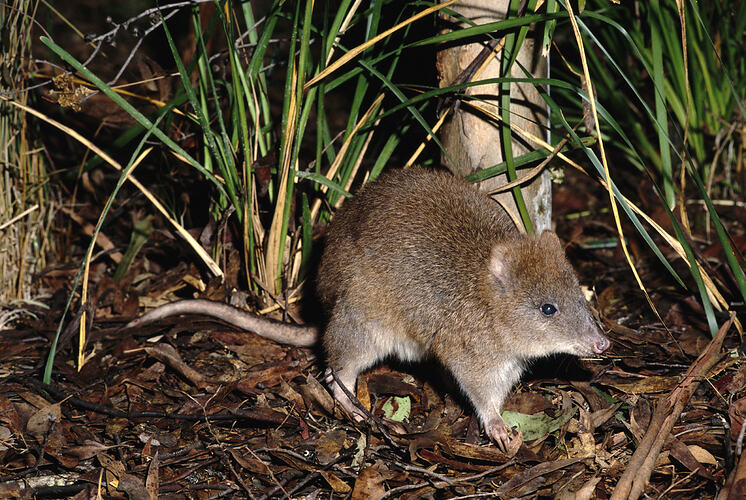General Description
Body fur brown, pale grey underneath. Hind feet are pink-brown and longer than the head. Tail black on top. Short nose. Body up to 41 cm, tail up to 33 cm.
Biology
Long-footed Potoroos are cryptic, using the forest to hide as they move around at night. They dig to find fungi hidden in the soil and give birth to one young per year. They occur in isolated populations through their range. The species was not described until 1980.
Distribution
Isolated populations in eastern Victoria and south-western New South Wales.
Habitat
Temperate rainforest and sclerophyll forests.
More Information
-
Animal Type
-
Animal SubType
-
Brief Id
Long slender head. Rabbit size. Hind feet longer than head.
-
Colours
Brown
-
Habitats
-
Where To Look
-
When Active
Nocturnal
-
Diet
Omnivore
-
Diet Categories
Fungi, Invertebrates
-
Endemicity
-
Conservation Statuses
CITES: Not listed, FFG Threatened List: Endangered, EPBC Act 1999: Endangered, IUCN Red List: Vulnerable
-
Taxon Name
-
Common Name
Long-footed Potoroo
-
Kingdom
-
Phylum
-
Subphylum
-
Class
-
Superorder
-
Order
-
Suborder
-
Family
-
Genus
-
Species Name
longipes

